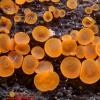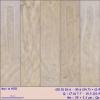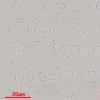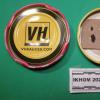
09-11-2025 13:20
Hello.A tiny ascomycete, appearing as erupting gra

08-11-2025 00:29
 Francois Guay
Francois Guay
I found this species in Quebec, Canada, on herbace

04-11-2025 09:07
Hello.A suspected Hymenoscyphus sprouting on a thi

04-11-2025 12:43
 Edvin Johannesen
Edvin Johannesen
Hi! One more found on old Populus tremula log in O

03-11-2025 21:34
 Edvin Johannesen
Edvin Johannesen
These tiny (0.4-0.5 mm diam.), whitish, short-stip
 Hi, this is my first post and I'm looking for help with the identification of this Orbilia.
Hi, this is my first post and I'm looking for help with the identification of this Orbilia.On Acer log in the area that is flooded for most of the year, except now.
Apothecia up to 1mm, bright orange.
Spores allantoid,
(4.1) 4.9 - 6.4 (6.7) × (1) 1.1 - 1.4 (1.5) µm
Q = (3) 3.8 - 5.4 (6.4) ; N = 28
Me = 5.5 × 1.2 µm ; Qe = 4.5
Each spore with globose spore body and two black spots.
Paraphyses have small bright orange droplets.
I still have a fresh specimen, so I can get more data if needed.
More pictures here:
https://inaturalist.ca/observations/53180147


No wonder that I couldn't find it myself. It is actually not in Ottawa, but on the other side of the Ottawa river in Gatineau, QC, Canada. I collected two species of Orbilia from that area. The second I believe is Orbilia dryadum, but I could be wrong. What do you think?
https://inaturalist.ca/observations/53320066
I also collected O.sarraziniana, O.luteorubella, and O.xanthostigma from Ottawa this year.
https://inaturalist.ca/observations?d1=2020-01-01&place_id=any&subview=grid&taxon_id=353030&user_id=ikhom&verifiable=any


I haven't seen any conidia on O. luteorubelia specimens (I have two). The last specimen, the bright pink, is from a drainage canal in a forest where the water usually moving, but right now everything is dried out, so it could be O. rosea based on the habitat and the color.
The other specimen is from beaver pond and it is more orange, so I assume that it fits more O. luteorubelia.
Actually I've seen conidia on Orbilia species only ones, and I was unable to identify it. I couldn't match the size of my spores to a species. My spores were just too big. (https://inaturalist.ca/observations/39726458)


Igor

https://inaturalist.ca/observations/39998556
Sorry, the pictures are not the best.


Protounguicularia looks promising, so if I find it the next time I will know what to look for.
Thank you, Zotto.
P.S. I found another Orbilia xanthoflexa (https://inaturalist.ca/observations/54693273), this time in ON, Canada, so it must be a common species for our region.





I added more pictures (https://inaturalist.org/observations/39998556).
My vertical section looks very close to your drawing, and the size of my spores, size, and shape of asci, and paraphyses matching yours. I was unable to see a stalk and if it is exist it is very short. I looked at the bark and it maybe came from a conifer tree. There are plenty of conifer trees around, so if we had windy days it may have been blown from the other tree.
Thank you for your help, Zotto.

I was unable to id this Orbilia by myself. Would you be able to help me? Very likely on Acer saccharum. It was next to Calycina confluens.
https://inaturalist.ca/observations/59291299
Thanks,
Igor


I emailed it.
Igor
Yesterday I received a parcel (sent end of December 2020) by you with 4 Canadian Orbilias.
Can I do barcoding with all the 4 species or is the material too little / valuable to sacrifice apothecia for barcoding?
Cheers,
Guy

I'm not familiar with the terminology and I'm not sure what you are asking me. It is all at your consideration what to do with the material that I sent you and you got everything I had from these specimens.
Best regards,
Igor


Here I am sending a picture that shows your really excellent fastening method. Extremely robust, also for rough transport on all postal routes and also very well mounted for microscopic sections or the isolation of entire apothecia e.g. for DNA extraction. Simply exemplary !! Many thanks to you for this care and for sending the material!
When I have results, I'll get in touch with you.
Best regards,
Guy

I also sent you another specimen 2019-496 (https://inaturalist.ca/observations/35958367) and you should get it in 2-3 weeks. This specimen is only a part of the collection, but it should have about two dozen large cups on the front side of the bark.
Best regards,
Igor
Hi Igor,
Your collection shown on iNaturalist appears to be Orbilia comma. If you can ever add a tiny bit of wood, it's easy to tell the difference between elm and ash as substrate.
I'm curious how the Canadian comma differs from the European one.
Cheers,
Guy

G-).




